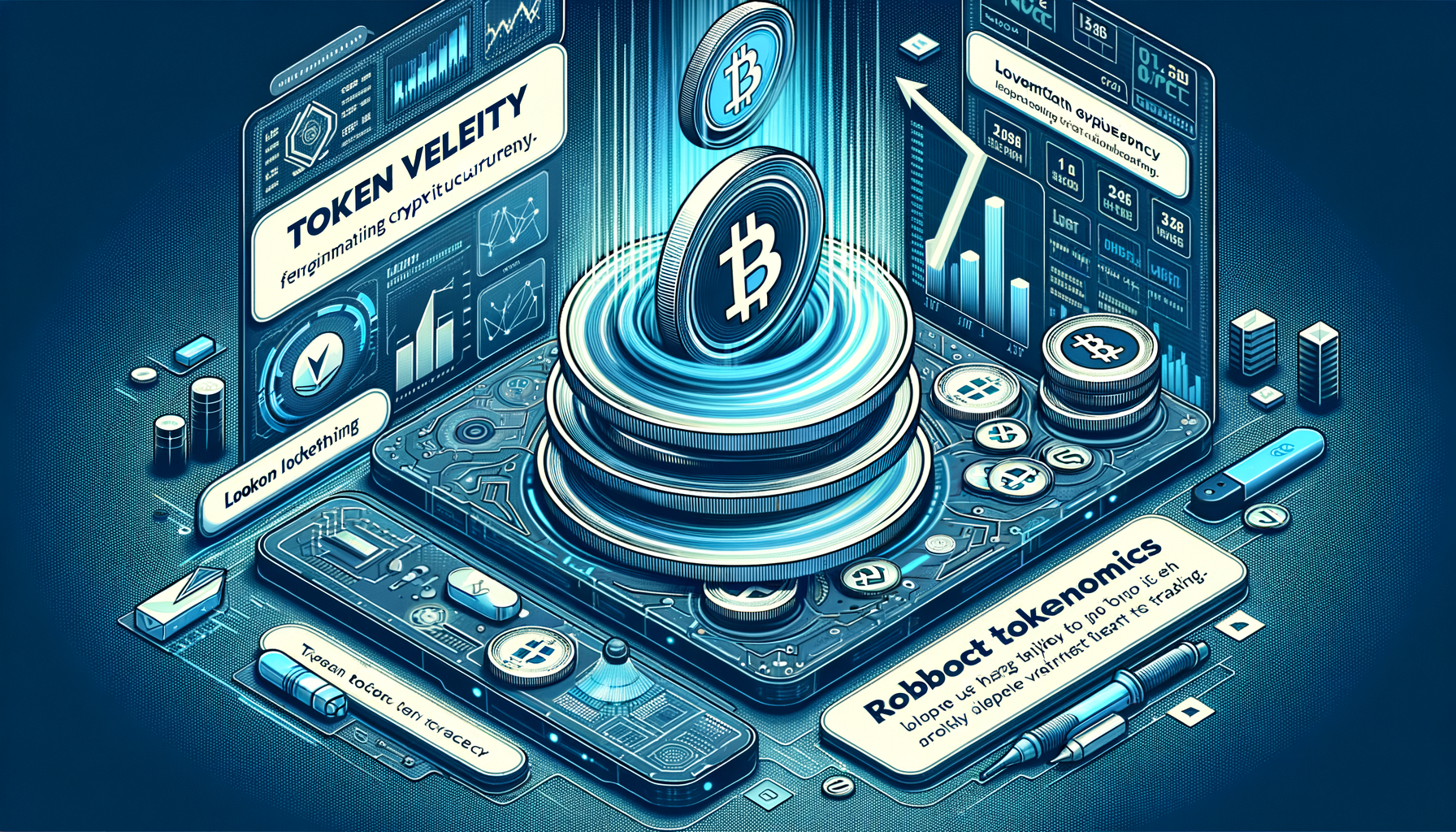Token Velocity Explained: Why Movement Impacts Value
In the rapidly evolving world of cryptocurrencies, many investors and enthusiasts focus on market cap, supply, community, and utility—but often overlook a crucial economic concept that plays a significant role in a token’s valuation: token velocity.
Understanding token velocity helps you make more informed decisions about which cryptocurrencies to explore, where to allocate your attention, and how value may fluctuate based on actual user behavior. In this article, we’ll break down the concept of token velocity, explain its impact on token value, and explore how certain cryptos—like LoopCoin ($LPC)—actively design their economic mechanisms with velocity in mind.
What Is Token Velocity?
Token velocity refers to how quickly a token changes hands or circulates within an ecosystem over a specific period of time. Borrowed from traditional economic theory, it mirrors the concept of "velocity of money", which is a measure of how frequently money is exchanged in a given economy.
In simpler terms, high token velocity means a token is moving around a lot—being frequently bought, sold, or used. Low token velocity implies that holders are keeping onto their tokens, using them less frequently in circulation.
Token Velocity Formula
In traditional models, token velocity (V) is calculated using:
V = Total Transaction Volume / Average Token Supply
This tells us how often, on average, a single unit of the token is used during a given timeframe.
Why Token Velocity Matters for Value
Token velocity is a key factor in determining token value sustainability. Here's why:
1. High Token Velocity → Lower Price Support
When a token is rapidly circulating, it implies that users may be treating it more like a tool (or worse, a vending token) rather than something they value. High velocity often leads to sell pressure that suppresses price appreciation, since most users are not holding onto the token for long.
2. Low Token Velocity → Higher Value Potential
Tokens with low velocity often have communities or mechanisms incentivizing long-term holding, scarcity, or utility-driven retention. In such ecosystems, demand can build up while supply is locked out of circulation—fostering supply-side scarcity, which can place upward pressure on the token’s value.
3. Velocity Indicates Utility Use vs. Speculation
Tokens used purposefully (e.g., paying for services, accessing platforms) may have healthy velocity based on real utility. But if most volume is driven by speculation, the token's long-term value could be less stable.
The balance of velocity is key—it should support usage but not flood the market with circulating supply.
Designing With Token Velocity in Mind
Some modern projects now recognize the role token velocity plays and intentionally design tokenomics that moderate it. For instance, deflationary, utility-driven tokens introduce mechanisms that reduce circulating supply while still encouraging use.
Let’s take a closer look at an example—LoopCoin ($LPC).
LoopCoin: A Case Study in Controlling Token Velocity
LoopCoin is a deflationary token designed to offset high token velocity by combining transaction-based revenue with weekly buybacks and permanent burns. This structure helps control circulation while increasing value potential through engineered scarcity.
Key Features Relevant to Token Velocity:
- 0.05% Transaction Fee: Every transaction generates revenue for the project’s treasury.
- Weekly Buybacks & Burning: The treasury funds are used to buy back LoopCoin from the market and permanently burn it, reducing total supply every week.
- Fixed Supply Model: LoopCoin’s total supply is decreasing from 1 billion tokens down to 25 million—matching Bitcoin’s eventual scarcity model.
- Real Utility: Used to access premium alerts from the MemeCoinAlerts platform and other media services.
This strategic velocity control loop—Earn → Buyback → Burn—ensures that the long-term circulating supply is always decreasing, which can help mitigate the value-diluting effects of high velocity.
Instead of penalizing token movement, LoopCoin leverages it by converting transactional activity into programmatic supply reduction. That’s the loop.
You can follow LoopCoin’s tokenomics, charts, and activity on DexScreener, or join the growing community on Telegram and X.
Balancing Token Velocity: The Ideal Scenario
Not all velocity is bad—an ideal token balances healthy circulation driven by real-world utility, with mechanisms that:
- Remove excess supply from the market
- Encourage long-term holding behavior
- Support increasing demand for actual use
This is especially relevant in environments where the utility is intrinsic to the ecosystem—such as media access, alerts, exclusive memberships, or SaaS services.
In Summary: Why Token Movement Matters
Token velocity is more than just an economic buzzword—it’s a practical metric that can influence price, demand, adoption, and perceived value over time.
Whether you’re a casual trader, long-term holder, or DeFi enthusiast, understanding token velocity will help you:
- Identify unsustainable or inflationary projects
- Recognize healthy tokenomics that reduce sell pressure
- Evaluate the long-term potential of your portfolio picks
And when exploring ecosystem-driven, deflationary tokens like LoopCoin, pay attention to how they moderate velocity while enhancing utility. It's about more than movement—it's about momentum in the right direction.
📈 Discover LoopCoin Today
Ready to explore a token designed with sustainable tokenomics and built-in velocity control? Learn more, explore the Loop, and trade responsibly:
The Loop is smarter than speed—it’s about sustainability, scarcity, and smart tokenomics.
This content is provided for general informational and educational purposes only. It does not constitute financial, investment, legal, or tax advice, and should not be interpreted as a recommendation to buy, sell, or hold any digital asset, including LoopCoin ($LPC).
LoopCoin is a utility token intended to be used within its ecosystem to access services and platforms. It is not a security, and we make no claims, promises, or guarantees regarding its future value, performance, or appreciation.
All token-related mechanisms such as burning, treasury allocations, or buybacks are programmatic features of the LoopCoin ecosystem, designed to enhance utility—not promises of profit.
You are solely responsible for your interactions with digital assets. Please consult with a qualified professional before making any decisions involving cryptocurrency. Use of this website and its content is subject to our Terms of Use and Privacy Policy.


